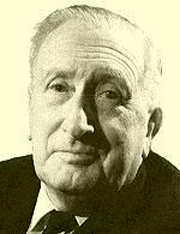Trivia
Viola masterpieces: Concertos
J.S. Bach: Brandenburg Concerto No. 3 in G Major
Formed from six pieces, the "Brandenburg Concerto" is a suite arranged from different types of concertos that were popular during the Baroque period. Of the six pieces, concerto No. 3 represents the oldest type of concerto and had no specific solo parts. Instead, it is composed of a part each for violin, viola, and cello, and then a basso continuo. The three types of instruments are played in harmony at times, and against one another at other times, in order to truly demonstrate the fascination of "concerto grosso," a type of orchestral music characteristic of the Baroque period.
W.A. Mozart: Symphony for Violin and Viola in E-flat Major
This piece is said to have been written by Mozart in his hometown of Salzburg in 1779, when he was 23 years old. No one knows why the piece was written, but it was likely performed for the court in Salzburg. It is especially noteworthy for requiring that the viola be tuned using a special method called "scordatura." The instrument is tuned a half step higher than normal, increasing the tension of the strings and allowing the viola to be played with a brighter and bolder sound. This shows the freedom that players had when playing the viola-similar to another solo instrument, the violin. Mozart preferred to play the viola when performing with his friends, and this piece may have been written to show that the viola was every bit as interesting as the violin.
E. Berlioz: Harold in Italy
"Harold in Italy" is a symphony that features an extensive part for solo viola. The solo viola represents the main character of the piece, Harold, who was named after the character of the same name in Childe Harold's Pilgrimage, a poem by the great English writer, Lord Byron. The piece is very recognizable as a work of Berlioz, who is sometimes referred to as the "magician of orchestration." Featuring truly splendid and creative orchestration, it opened new ground in showing the potential of the viola. However, Paganini, who encouraged that Berlioz compose the piece, ultimately refused to perform it for some reason. Paganini had recently acquired a Stradivarius viola and likely expected a concerto in which the viola played a more prominent role. Regardless, this piece-as a symphony and not as a concerto-continued to show how interesting an instrument the viola is in many new ways. Although Paganini's disappointment is understandable, thanks to him the world was left with a piece of music with a truly unique viola solo.
W. Walton: Viola Concerto
"Viola Concerto" by the modern English composer William Walton is widely regarded as the greatest viola concerto of the 20th century. Walton wrote this piece for Lionel Tertis, a virtuoso who was active in the first half of the 20th century, but it was first performed as a solo performance by Hindemith in 1929. Like other modern English composers, Walton's work is characterized by an elegant melodiousness and brings the traditions of the romanticists into the 20th century. These traits can be heard clearly even in this viola concerto.

William Walton
Musical Instrument Guide : Violin Contents
Origins
Structure
How to Play
How the Instrument is Made
Choosing an Instrument
Care and Maintenance
Trivia
- The f-hole used to be a C-hole or S-hole
- Why the f-hole?
- Violinists must bow to the horse
- Steel strings or gut strings? That is the question
- Is the chinrest the unsung hero of the violin?
- Most violin varnishes are also medicines
- Violin masterpieces: Solos I
- Violin masterpieces: Solos II
- Violin masterpieces: Solos III
- Violin masterpieces: Concertos I
- Violin masterpieces: Concertos II
- Viola masterpieces: Chamber music
- Viola masterpieces: Concertos
- Cello masterpieces: Concertos I
- Cello masterpieces: Concertos II
- Cello masterpieces: Solos
- Contrabass masterpieces: Concertos
- Contrabass masterpieces: Chamber music
- Orchestral masterpieces featuring the contrabass
- What do you call the part on the bow that you hold?
